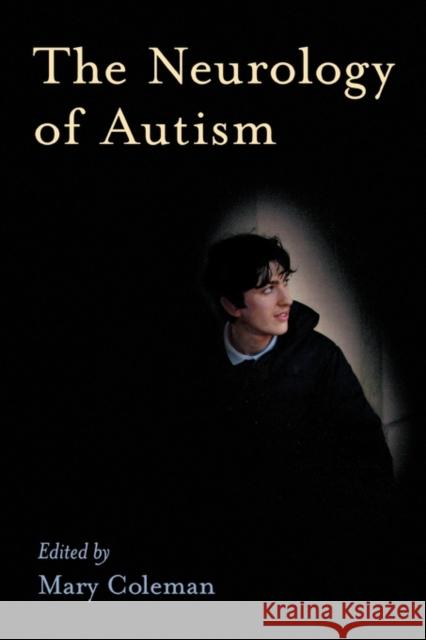The Neurology of Autism » książka
The Neurology of Autism
ISBN-13: 9780195387766 / Angielski / Miękka / 2009 / 272 str.
The Neurology of Autism
ISBN-13: 9780195387766 / Angielski / Miękka / 2009 / 272 str.
(netto: 183,79 VAT: 5%)
Najniższa cena z 30 dni: 187,59 zł
ok. 30 dni roboczych.
Darmowa dostawa!
In Neurology of Autism, Mary Coleman, Catalina Betancur, G. Robert DeLong, Christopher Gillberg, Yoshiko Nomura, Lorenzo Pavone, Martin Ruggieri, and Michele Zappella use the tools of neurological analysis to address a number of the major questions that have arisen in the study of autism. The answers they present have important implications for the direction of future autism research, diagnosis, and treatment. What are the neurological signs and symptoms of autism? The latest information is presented here in an in-depth discussion of epilepsy, cranial circumference, changes in muscle tone, stereotypies, and mutism found in children with autism. In addition, a template is provided for practitioners to follow when conducting neurological examinations of a child with autism. What are the best options for the treatment of autism? The current medical, educational, and alternative therapies are thoroughly reviewed and evaluated. Is autism reversible? The question is explored for syndromic autism, where diseases may have a transient autistic phase, and reviewed in detail for nonsyndromic autism.
Is autism primarily a single disease, as originally described by Leo Kanner? Research presented here suggests that autism is, instead, a syndrome involving many disease entities. Has the incidence of autism been increasing in recent years? A sophisticated, historical review of autisms prevalence rates suggests that it has never been rare. What is the relationship between autism and Asperger syndrome? The latest evidence presented here sheds light on the degree to which both syndromes share more than clinical characteristics; they also have some similar findings in imaging, neuropathological, and genetic studies. Which components of the brains neural networks need to be impaired to cause the appearance of autistic symptoms? Although there are many candidate regions, dysfunction of the cerebellum and its circuits is noted to be of great interest. Student and professional researchers, practitioners, and parents will find this book to be a valuable resource for both the latest information from basic-science research and its application to the diagnosis and treatment of autism. " This book] includes up-to-date genetic evidence, underlining the complexities of genetic/environmental influences...I recommend this easy and informative read." -European Journal of Pediatric Neurology ..".authoritative." -The Lancet Neurology "Coleman's new book is an absolute must-read for anyone interested in the progress made in understanding the causes of autism. The field owes her a tribute worthy of someone who has transformed an area of neuroscience." -Simon Baron-Cohen in Nature Neuroscience " I]nformative and comprehensive in its treatment of the neurologic basis of autism...well written and easy to understand...the contributing authors have done an excellent job of making complex medical concepts understandable to all. The glossary at the end of the book is extremely helpful in this regard. The book is well referenced, provides helpful tables throughout, and includes a summary of relevant points at the end of each chapter.The authors are to be commended for presenting a very balanced view of current knowledge; they also indicate what we do not yet understand about brain functioning in autism and provide an important road map for ongoing exploration." -Marshalyn Yeargin-Allsopp in The New England Journal of Medicine "At last it is recognised that developmental neurology is the appropriate context in which to explain autism. The authors of this volume, all pioneers in the field, consider new ideas on autism in this context. They succeed in making surprising and illuminating comparisons between autism and neurological disorders whose origin is already known. This work is a significant step towards understanding the causes of autistic disorders."-Uta Frith, Institute of Cognitive Neuroscience and Department of Psychology, University College London "When and if the secret of autism is teased from the myriad disease states that exhibit the syndrome, it will be through efforts such as are represented in this volume. Dr. Coleman has 'picked the brains' of recognized experts from neurology and related sciences, and has assembled a wealth of up-to-date and meticulously referenced information regarding both those diseases and the core symptoms of autism." -Peter B. Rosenberger, Massachusetts General Hospital










